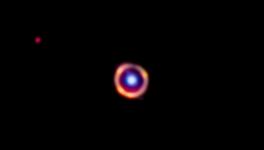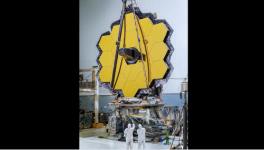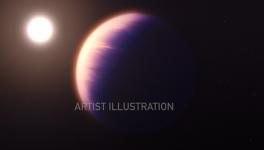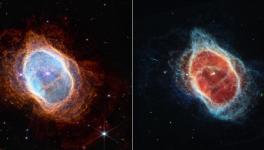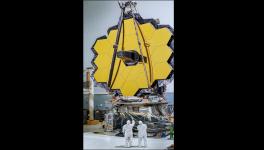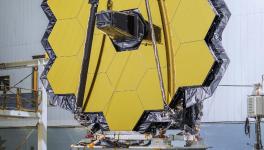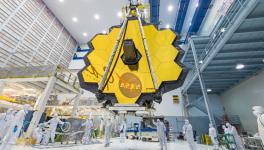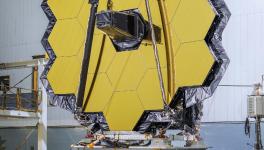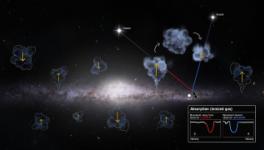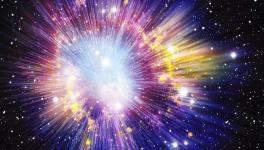James Webb Telescope: First Images Reveal Ancient Galaxies
Representational use only.Image Courtesy: Medium.Com
The James Webb Telescope, launched in December last year, aimed to look at distant galaxies. Its primary target was the epoch of the early pioneering stars whose light ended the darkness and engulfed the cosmos shortly after the Big Bang, some 13 billion years ago.
The nuclear reactions in those celestial objects would have given birth to heavy atoms like carbon, nitrogen, oxygen, phosphorus and sulphur, essential for forming lives. The other aim of the telescope was to study the atmospheres of distant planets, which may help researchers judge if any such planets outside the solar system are habitable.
After being in space for over six months, the observatory, a joint effort by NASA (National Aeronautics and Space Administration), ESA (European Space Agency) and CSA (Canadian Space Agency), has released its first images. The images reveal far-distant galaxies as they were some 4.6 billion years ago. Experts believe that compelling images are the first step toward reshaping our understanding of the time when the universe dawned.
The James Webb images show the galaxy cluster SMACS 0723, which appeared some 4.6 billion years ago. The galaxy cluster also acts as a gravitational lens, which magnifies more galaxies behind it. The James Webb telescope has brought those far-flung galaxies into sharp focus. These galaxies have tiny and faint structures that were seen never before. A gravitational lens is formed by massive objects that magnify or distort the light of objects behind it. The telescope is capturing the SMACS 0723 galaxy clusters and more distant galaxies caused by gravitational lensing.
The administrator of NASA, Bill Nelson, while explaining the images said, "The image showed the light of galaxies bending around other galaxies, travelling for billions of years before reaching the telescope. We are looking back more than 13 billion years."
He added that more images to be released by the space agency would reach back to about 13.5 billion years, close to the estimated start point of the universe itself."
The mission goes back almost to the beginning. The current images are the deepest images of the universe ever captured.
Experts have expressed their beliefs after seeing the images that James Webb could revolutionise our understanding of the universe and its origin by capturing detailed infrared images.
"Webb can see backwards in time just after the big bang by looking for galaxies so far away, and the light has taken many billions of years to get from those galaxies to ourselves. Webb is bigger than Hubble so that it can see fainter galaxies that are further away," said Jonathan Gardner, deputy senior project scientist at NASA, in a statement.
Webb carries four instruments, considered the most updated and advanced, with sensitive detectors for infrared signals with unprecedented resolution. The telescope will study infrared light from celestial bodies with a clarity that has never been achieved. This important scientific mission is a successor to NASA's Hubble and Spitzer space telescopes. The Webb also aims to complement the scientific discoveries of these missions.
Webb differs in several aspects from its predecessors like the Hubble. The first is the capability of the observatory in its 6.5-meter wide golden mirror, which is three times wider than the primary reflector of Hubble. The enlarged reflector, combined with the sensitive instrumentations of the Webb, enables astronomers to have a deeper look into space and go back in time than was ever achievable. The large reflector has 18 segments, each having tiny motors on the back. The reflector is focused so that it can receive infrared wavelengths from the early stars of the universe. The motors will adjust the curvature of the reflectors.
"It's exhilarating to see the fantastic image released today. As we are ourselves made of the material synthesised in stars over the past 13 billion years, JWST has the unique ability to trace back to our own origins in this remarkable universe. Everyone can take part in this amazing adventure," commented Richard Ellis, professor of astrophysics at University College London, in a statement.
Get the latest reports & analysis with people's perspective on Protests, movements & deep analytical videos, discussions of the current affairs in your Telegram app. Subscribe to NewsClick's Telegram channel & get Real-Time updates on stories, as they get published on our website.









